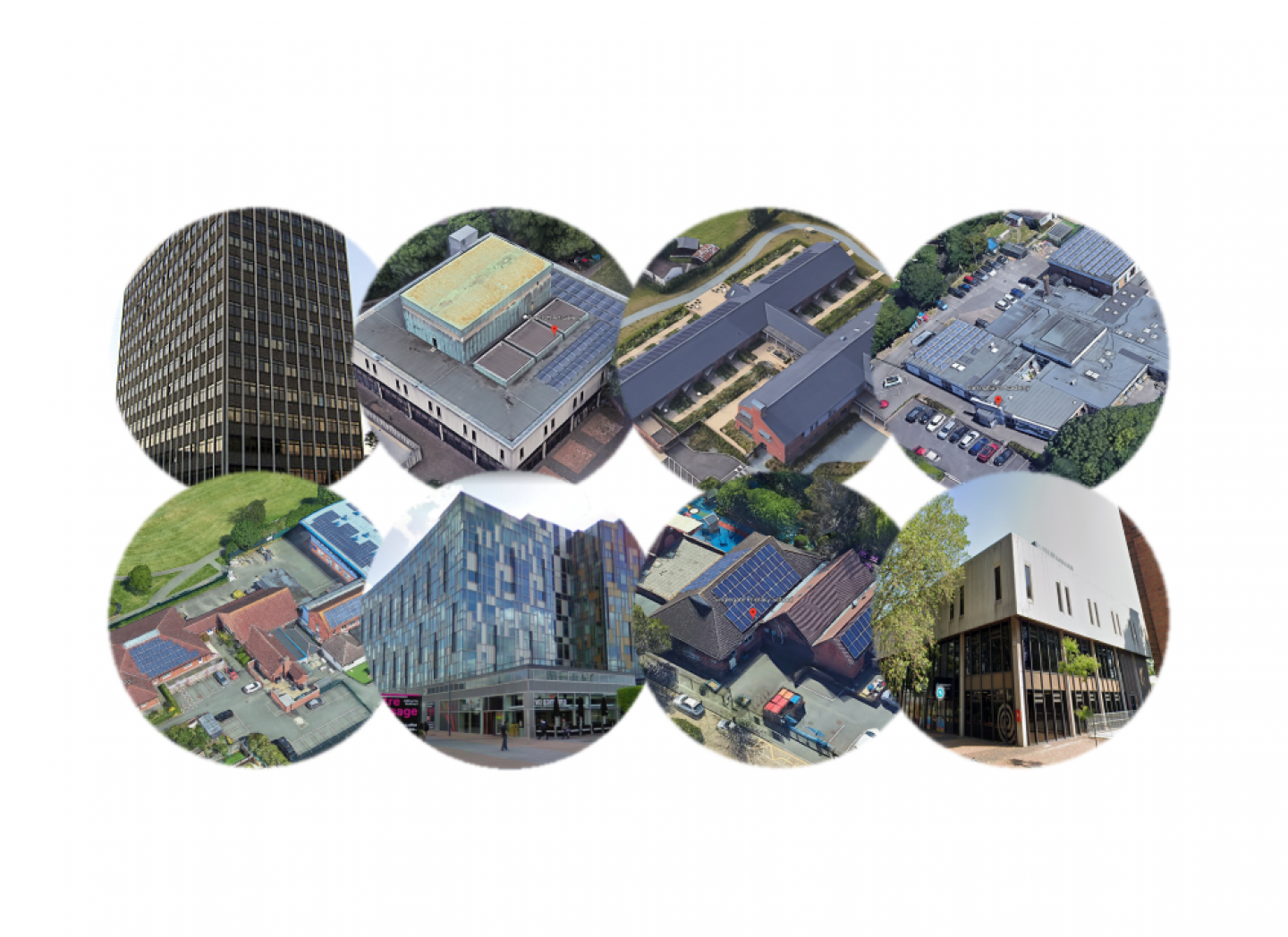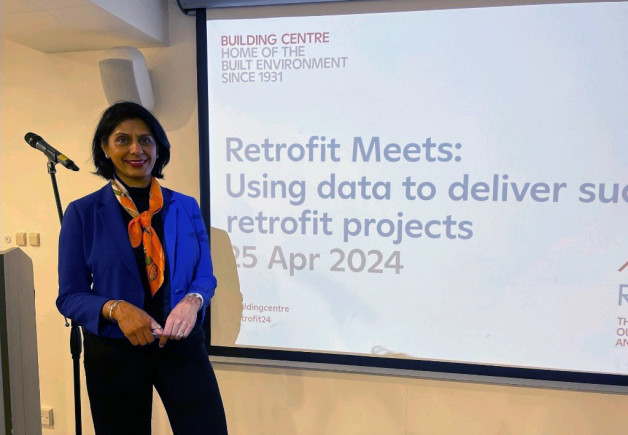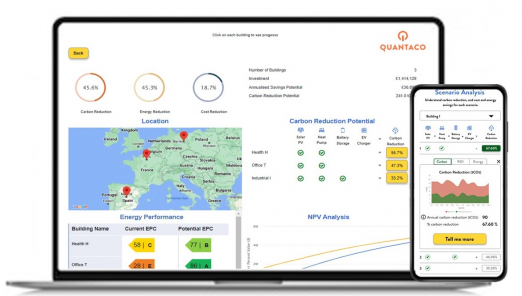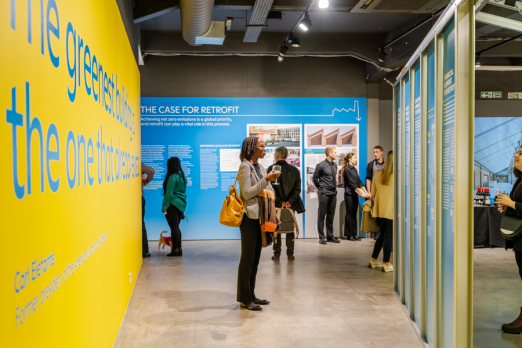Retrofitting can enhance asset value, reduce operational costs, and improve rental yields
Landlords and asset investors face unprecedented challenges, but also opportunities when it comes to retrofitting for decarbonisation in commercial real estate.
The traditional approach of investing in retrofitting one project and one building at a time is hugely inadequate given the scale of the challenge. The UK needs to have retrofitted 500 commercial properties a week* by 2030 to achieve Net Zero.
Traditional methods Fall Short
Retrofitting commercial properties is currently a piecemeal process, tackling individual buildings and projects in isolation. Plus, the multiple stakeholders in each organisation, with differing agendas and data needs, make this investment process long, tedious and overwhelming for most businesses, resulting in organisational inertia. It’s inefficient and fails to leverage economies of scale available across a portfolio.
Today’s climate urgency demands a rethink and a more strategic and scalable whole-portfolio approach.
Rethinking the business case for retrofits
A more promising avenue for investment lies in an innovative approach to the business case for retrofits, which transcends traditional energy cost savings. While initial investment in decarbonisation may seem substantial, it paves the way for aligning asset values with regulatory compliance, offering new incentives for investment making the business case more attractive. This forward-thinking strategy can unlock additional value, avoid stranding risk and drive progress in retrofit investments.
- Aligning Retrofit Projects with Asset Life Cycle Management
Aligning retrofit projects with asset life cycle management can maximise impact and improve the financial business. This means integrating retrofitting efforts with the overall maintenance and management plan of the asset - so landlords can ensure retrofits contribute to the long-term sustainability and profitability of the estate.
Lifecycle Cost Analysis: Evaluating the total cost of ownership, including initial retrofit costs and long-term operational savings, provides a clear financial picture.
Incremental vs New Investment: When considering investments in low-carbon projects, it’s important to view the additional funds needed not as a separate expense but rather as an incremental cost. This cost should then be compared to what would be spent anyway on replacing an existing asset with a similar one.
Aligning retrofit projects with asset life cycle management offers the greatest impact for the decarbonisation business case.
- Beyond energy price – stacking the business case
The business cases for Net Zero retrofits have been based on the energy utility value. This is no longer appropriate due to the relatively low(er) cost of energy, despite significant price rises in recent years, and the off-kilter apportioning of infrastructure costs between gas and electricity.
We need to consider the monetary impact of low carbon retrofits on insurance and asset financing costs. These make the business case more attractive and robust. Banks and insurers are bringing climate-aligned products to the market with attractive rates for investment in green buildings and high-performance assets. Lower performing assets will be valued below market price, which in turn would affect the lending available to landlords. This is supported by the regulations that financial institutions must comply with, like PCAF and IFRS (formerly TCFD).
The Bank of England’s 2021 Climate Biennial Exploratory Scenario evaluated the effects of early and late actions on mortgage losses for banks through 2050. The findings show that properties with low energy efficiency ratings (EPC “F” and “G”) will see high impairment rates, rendering them unmarketable by 2050. In contrast, energy-efficient properties will benefit, while inefficient ones may face reduced rental income. And for higher-risk properties insurance costs will rise and financing options narrow. - Whole Building and Portfolio Approach
Moving away from single project business cases to whole building and whole portfolio approaches, makes a wider set of interventions financially attractive through the aggregation of projects.
A whole building approach enables the selection of the best combination of technologies and takes account of interoperability of systems. Further, a whole portfolio approach can include projects with a longer payback into the investment plan because of aggregation. The two together drive a robust solution technically and financially.
The Role of Data in Retrotting
Data plays a pivotal role in enabling and aligning these approaches, and enabling strategic decision-making for whole portfolios at pace and scale, by providing insights into the current condition and potential performance.
Comprehensive data analytics can assess the property, identify potential stranding risks, and determine the scope of work required. This information is vital to develop an effective retrofit strategy that addresses risks and optimises investment, with considerations for both carbon emissions and monetary savings.
Furthermore, data and analytics support the decision-making process in retrofitting by highlighting the importance of regulatory compliance and future-proofing commercial properties. A business case for retrofitting can be developed by taking into account existing and forthcoming regulations, ensuring that the retrofitted property meets the required standards for energy efficiency and sustainability
A data-driven strategy enables asset landlords and investors to deliver projects at scale and with confidence based on comprehensive insights, to optimise resource allocation, and to achieve better financial and environmental outcomes.
What Value Does Retrotting Bring?
As we are on the brink of a climate emergency, a combination of these three approaches is essential to moving the needle on the vast volume of retrofit projects required in a short space of time. The future of commercial real estate decarbonisation lies in the financial business case, and in the underlying business value that retrofits can bring to landlords and investors alike.
Moving away from the traditional approach of solely considering energy prices, to including wider benefits such as asset values, lease attractiveness and financing costs will be a key driver for success. This will also help tackle the landlord-tenant divide, where the landlord pays for retrofits and tenants benefit from lower energy costs.
Retrofitting can enhance asset value, reduce operational costs, and improve rental yields. Moving away from a “Cost of Energy” business case to the impact on property value based on avoiding stranding, enables a future proofing approach to property estates whilst ensuring the robustness of the balance sheet for a property landlord.
About Quantaco
Our mission is to challenge the status quo of piecemeal retrofits in the built environment, accelerate decarbonisation and support organisations in making the right investment decisions at scale.
The Quantaco software empowers real estate owners, investors and managers to make strategic and technical decisions to achieve Net Zero at scale with confidence, through empirical, data-driven strategies and rapid cleantech investment options analysis.
[* Based on properties over 500m2, with a D-G EPC & DEC Ratings]



